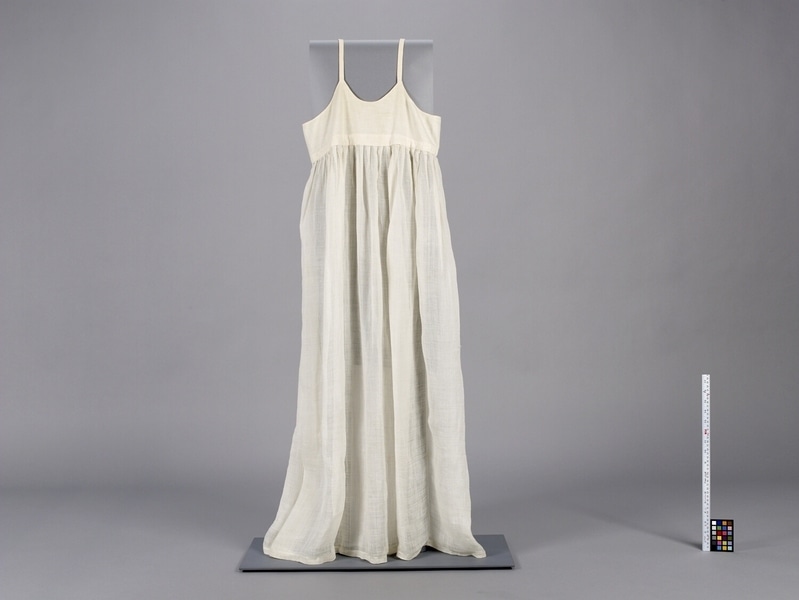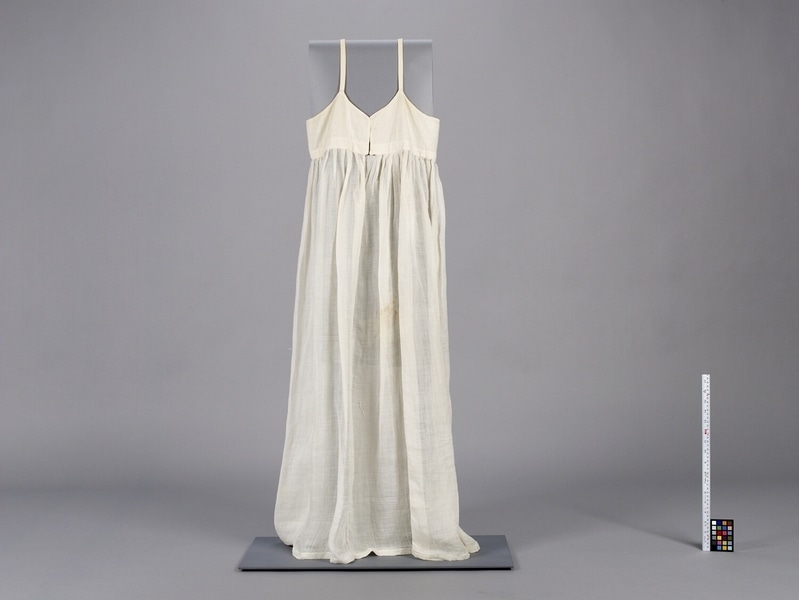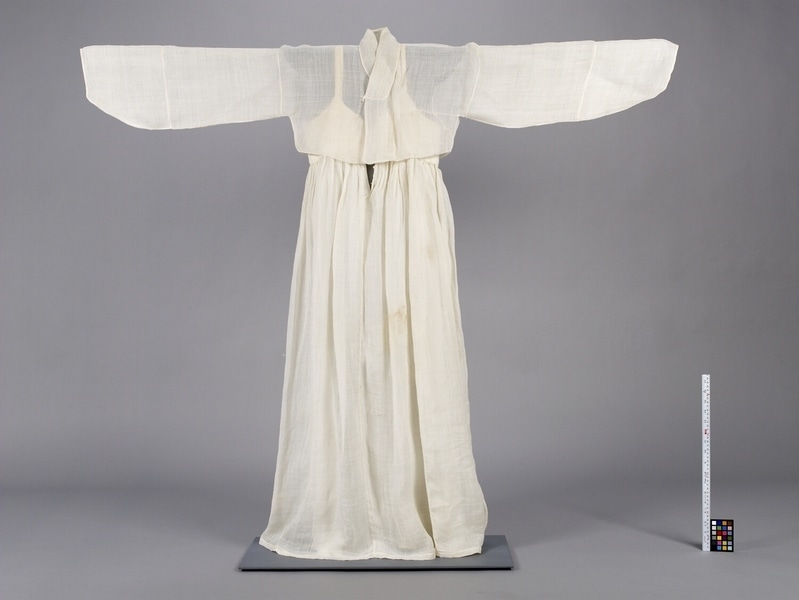Skirt Item Number: Ed1.315 from the MOA: University of British Columbia



Description
Outer skirt made of seven panels of white ramie. The skirt panels are pleated and inserted into a band of unbleached cotton. The the upper edge of the band is scalloped, with the points of the scallops meeting the ends of two shoulder straps of the same material. The band opens at the front and the front seam is left unstitched near the top. One strap is stitched in place with black thread.
History Of Use
The straps attached to the curved shape of the skirt band were major innovations introduced after the opening of Korea to the outside world in the late 19th century, replacing the simple waistband with long ties of the traditional “chi-ma”. The new style was considered to be more modest, as it covered the breasts, and was more comfortable. Clothing made of ramie was worn as formal wear in the summer for comfort.
Specific Techniques
The fabric was hand-woven to a narrow loom width. The garment was machine sewn.
Narrative
Worn by Norma Elrod while living in Korea. This skirt is part of a set of woman’s summer clothing, including Ed1.314 and Ed1.316. Most of the clothing in the J. McRee Elrod Collection was made for him and his family by friends while they were living in Korea, much of it by Kim, Sung Sook. She and her family lived cooperatively in the same house as the Elrod family. While they were there, the Elrods preferred to wear Korean clothing on very cold days and for social occasions. They found it to be more comfortable than western clothing in cold weather, as public buildings were unheated in the period immediately following the Korean War. It also was more comfortable for floor seating in Korean homes, and easier to store with limited furniture than western clothing.
Item History
- Made by Sung Sook Kim (Maker) in Korea between 1955 and 1960
- Collected between 1955 and 1960
- Owned by Norma Elrod
- Owned by J. McRee Elrod before October 13, 1976
- Received from J. McRee Elrod (Donor) on October 13, 1976
What
- Name
- Skirt
- Identification Number
- Ed1.315
- Type of Item
- skirt
- Material
- ramie fibre and cotton fibre
- Manufacturing Technique
- spun, woven, cut, pleated and sewn
- Overall
- height 129.0 cm, width 95.0 cm
Who
- Culture
- Korean
- Creator
- Sung Sook Kim (Maker)
- Previous Owner
- Norma Elrod and J. McRee Elrod
- Received from
- J. McRee Elrod (Donor)
Where
- Holding Institution
- MOA: University of British Columbia
- Made in
- Korea
When
- Creation Date
- between 1955 and 1960
- Collection Date
- between 1955 and 1960
- Ownership Date
- before October 13, 1976
- Acquisition Date
- on October 13, 1976
Other
- Item Classes
- textiles
- Condition
- good
- Accession Number
- 0335/0003 b